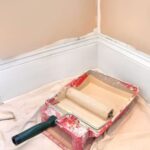Have you ever wondered, “What is a unsecured home improvement loan and how does it work?” A unsecured home improvement loan is a type of personal loan that allows homeowners to finance renovation or remodeling projects without using their property as collateral.
In this article, we will delve into the details of unsecured home improvement loans, including their benefits, qualifications, associated risks, comparison to secured loans, application process, top lenders offering this type of loan, real-life success stories, and tips for maximizing its use.
Unsecured home improvement loans offer homeowners the flexibility to make improvements to their homes without risking their property. These loans do not require any collateral and are based on the borrower’s creditworthiness. This means that if you default on the loan, the lender cannot repossess your property. Understanding how these loans work and their advantages can help homeowners make informed decisions when considering financing their home improvement projects.
When it comes to obtaining an unsecured home improvement loan, there are certain qualifications that borrowers need to meet. These may include having a good credit score, stable income, and a low debt-to-income ratio.
It’s important to understand the criteria set by lenders in order to increase your chances of getting approved for an unsecured home improvement loan. In the following sections, we will explore the benefits of unsecured home improvement loans, along with the risks associated with them and how they compare to secured loans.
Benefits of Unsecured Home Improvement Loans
Unsecured home improvement loans offer numerous benefits to homeowners looking to renovate, remodel, or upgrade their property. Unlike secured loans, unsecured home improvement loans do not require any collateral such as a house or car. This makes them a popular option for individuals who may not want to put their home or other assets at risk.
Flexibility
One of the key benefits of unsecured home improvement loans is the flexibility they offer. Borrowers can use the funds for a wide range of projects, including kitchen and bathroom remodels, roof repairs, room additions, landscaping, and more. This flexibility allows homeowners to tackle multiple projects without being limited by the type of renovation they want to undertake.
No Risk to Assets
Since unsecured home improvement loans do not require collateral, borrowers don’t have to worry about putting their assets on the line. In the event that they are unable to repay the loan, their personal property is not at risk of being repossessed by the lender. This adds an extra layer of security for homeowners who may be hesitant to use their home or other valuable possessions as collateral for a loan.
Quick Approval Process
Compared to secured loans that involve lengthy approval processes and extensive paperwork, unsecured home improvement loans typically have quicker approval times. This means that homeowners can access the funds they need in a timely manner and proceed with their renovation plans without unnecessary delays. Additionally, many lenders offer online application options for added convenience.
Qualifications for Obtaining an Unsecured Home Improvement Loan
An unsecured home improvement loan is a type of loan that does not require any collateral, such as a house or car, to secure the loan. This means that if you default on the loan, the lender cannot automatically take possession of your assets.
Instead, they would have to take legal action to try and recover the money owed. Unsecured home improvement loans are often used by homeowners who may not have enough equity in their homes to qualify for a secured loan, or who simply do not want to risk their home or other assets.
In order to qualify for an unsecured home improvement loan, lenders will typically look at factors such as your credit score, income, and debt-to-income ratio. A good credit score is important for obtaining an unsecured loan, as it shows lenders that you have a history of responsibly managing your finances.
Lenders will also want to see proof of income to ensure that you have the means to repay the loan. Additionally, having a low debt-to-income ratio can increase your chances of approval, as it shows that you are not heavily burdened by debt.
It’s important to note that because unsecured home improvement loans do not require collateral, they generally come with higher interest rates compared to secured loans. This is because lenders take on more risk when offering unsecured loans since there is no guarantee of repayment through collateral. As a result, it’s crucial to carefully consider whether you can afford the potentially higher interest rates before taking out an unsecured home improvement loan.
| Factor | Impact on Loan Approval |
|---|---|
| Credit Score | A good credit score increases chances of approval |
| Income and Employment | Proof of stable income is required |
| Debt-to-Income Ratio | A low ratio can improve likelihood of approval |
Risks Associated With Unsecured Home Improvement Loans
When considering obtaining an unsecured home improvement loan, it is important to understand the risks involved. Unlike secured loans, which are backed by collateral such as your home or car, unsecured loans do not require any asset to secure the loan. This means that if you default on the loan, the lender does not have a specific asset to repossess. Here are some of the potential risks associated with unsecured home improvement loans:
1. Higher Interest Rates: Unsecured loans typically come with higher interest rates compared to secured loans. This is because lenders take on more risk when lending without collateral, so they compensate for this added risk by charging higher interest.
2. Potential for Lower Loan Amounts: Since there is no collateral backing the loan, lenders may be more cautious about how much they are willing to lend. This could result in lower loan amounts compared to what you might be able to secure with a secured loan.
3. Impact on Credit Score: If you default on an unsecured home improvement loan, it can have a negative impact on your credit score. This can make it more difficult and expensive to borrow money in the future.
It’s important to carefully consider these risks before taking out an unsecured home improvement loan and ensure that you have a plan in place for repayment.
Comparison to Secured Home Improvement Loans
Unsecured home improvement loans are a type of personal loan that does not require any collateral, such as your home or other assets. This means that if you were to default on the loan, the lender cannot seize your property. On the other hand, secured home improvement loans are backed by collateral, making them less risky for lenders and often resulting in lower interest rates for borrowers.
One of the main benefits of unsecured home improvement loans is that they are accessible to a wider range of homeowners. If you do not have significant equity in your home or do not want to risk losing your property, an unsecured loan may be a more suitable option for financing your home renovation projects.
Another advantage of unsecured home improvement loans is the expedited application and approval process. Since there is no need for a lengthy appraisal or evaluation of collateral, borrowers can typically receive funds more quickly than with secured loans. Additionally, unsecured loans may offer more flexibility in terms of loan amounts and repayment periods.
While unsecured home improvement loans offer several advantages, it’s important to consider the potential downsides. Because these loans carry higher risks for lenders, they often come with higher interest rates and shorter repayment terms compared to secured loans. Additionally, without collateral as security, borrowers with less-than-stellar credit may face difficulty in obtaining favorable loan terms.
How to Apply for an Unsecured Home Improvement Loan
Applying for an unsecured home improvement loan can be a great option for homeowners who want to make upgrades to their homes without using their property as collateral. But how exactly does one go about applying for this type of loan? Here are a few steps to consider when seeking an unsecured home improvement loan.
First, it’s important to understand the requirements and qualifications that lenders look for when approving unsecured home improvement loans. Since these loans are not backed by any collateral, such as equity in the home, lenders will typically evaluate the borrower’s credit score, income, and overall financial standing. Having a good credit score and stable income can greatly improve your chances of being approved for an unsecured home improvement loan.
Once you have a clear understanding of the qualifications needed, you can start shopping around for lenders that offer unsecured home improvement loans. It’s important to compare interest rates, terms, and fees from different lenders to find the best deal for your specific financial situation. Online research and contacting local banks or credit unions are good places to start when looking for potential lenders.
After identifying a lender that meets your needs, you can begin the application process. Be prepared to provide documentation such as proof of income, employment history, and other personal and financial information. The lender will review your application and financial details before making a decision on whether to approve you for an unsecured home improvement loan. If approved, be sure to carefully review the terms of the loan before signing any agreements.
Top Lenders Offering Unsecured Home Improvement Loans
When considering obtaining an unsecured home improvement loan, it is essential to research and compare the various lenders offering this type of financing. There are several reputable financial institutions and online lenders that provide unsecured home improvement loans. These lenders offer competitive interest rates and flexible terms to suit the needs of homeowners looking to make improvements to their properties.
Bank of America
One of the top lenders offering unsecured home improvement loans is Bank of America. They provide personal loans specifically designed for home improvement projects, with fixed interest rates and no collateral required. Borrowers can easily apply online and receive a decision within minutes, making it a convenient option for those in need of quick funding for their home renovations.
Wells Fargo
Wells Fargo also offers unsecured personal loans for home improvements, providing borrowers with access to funds without the need for equity in their homes. With competitive interest rates and flexible repayment terms, Wells Fargo is a popular choice for homeowners looking to finance their renovation projects without putting their homes at risk.
LendingClub
For those interested in exploring online lending options, LendingClub is another top lender offering unsecured home improvement loans. Borrowers can obtain fixed-rate personal loans with no prepayment penalties, making it a flexible choice for funding various home renovation projects.
Ultimately, when seeking an unsecured home improvement loan, it’s important to compare offers from multiple lenders to find the best fit for your specific financial needs and goals. Each lender may have different eligibility requirements, terms, and loan amounts available, so carefully reviewing your options will help you secure the most favorable financing for your home improvement plans.
Real-Life Success Stories With Unsecured Home Improvement Loans
Unsecured home improvement loans have been a lifeline for many homeowners looking to renovate their homes without putting up collateral. One such success story is that of Sarah and Tom, a young couple who wanted to update their outdated kitchen but did not have the funds available.
They decided to apply for an unsecured home improvement loan and were able to receive the necessary funds within a few days. With the loan, they were able to completely remodel their kitchen, increasing the value of their home and creating a space that they love.
Another success story is that of John, who used an unsecured home improvement loan to add a bathroom to his previously one-bathroom house. This addition not only made his home more functional for his family but also increased its overall value. The process of applying for and receiving the unsecured loan was fast and easy, allowing John to begin his renovation project sooner rather than later.
These success stories highlight the benefits of unsecured home improvement loans for homeowners who may not have equity or assets to use as collateral. These loans provide an accessible option for funding renovations and improvements, allowing individuals and families to create spaces that better suit their needs.
| Success Story | Renovation Project |
|---|---|
| Sarah and Tom | Kitchen Remodel |
| John | Bathroom Addition |
Tips for Maximizing the Use of an Unsecured Home Improvement Loan
In conclusion, an unsecured home improvement loan can be a valuable tool for homeowners looking to make renovations or repairs to their property. These types of loans offer the benefit of not requiring any collateral, making them accessible to a wider range of borrowers. However, it’s important for individuals to carefully consider the qualifications and risks associated with unsecured home improvement loans before applying.
When it comes to maximizing the use of an unsecured home improvement loan, there are several tips that can help borrowers make the most of their funds. One key tip is to create a detailed budget and plan for the renovations or repairs that need to be made. By having a clear understanding of the costs involved, borrowers can ensure they are using their loan funds efficiently and effectively.
Furthermore, seeking out multiple quotes from different contractors or service providers can also help borrowers stretch their loan funds further. Comparing prices and negotiating for the best deal can make a significant difference in how far the loan money goes.
Additionally, considering energy-efficient upgrades or improvements that could provide long-term savings can add value to the use of an unsecured home improvement loan. Overall, with careful planning and strategic decision-making, homeowners can make the most out of their unsecured home improvement loan to improve their living space and increase the value of their property.
Frequently Asked Questions
What Is the Difference Between a Home Loan and a Home Improvement Loan?
The main difference between a home loan and a home improvement loan lies in their intended use. A home loan is specifically for purchasing a new home or refinancing an existing mortgage, while a home improvement loan is meant for financing renovation or repair projects for your current home.
What Is Considered an Unsecured Loan?
An unsecured loan is a type of borrowing that does not require any collateral to back it up. This means that the lender is relying solely on the borrower’s creditworthiness and ability to repay the loan, rather than any specific asset like a house or car.
What Is a Home Improvement Loan?
A home improvement loan is a type of personal loan that is specifically used for funding renovations, repairs, or enhancements to one’s home. These loans are typically unsecured, meaning they do not require any collateral, and can be used to finance projects like kitchen remodels, bathroom upgrades, or other home improvements.

I’m thrilled to have you here as a part of the Remodeling Top community. This is where my journey as an architect and remodeling enthusiast intersects with your passion for transforming houses into dream homes.





